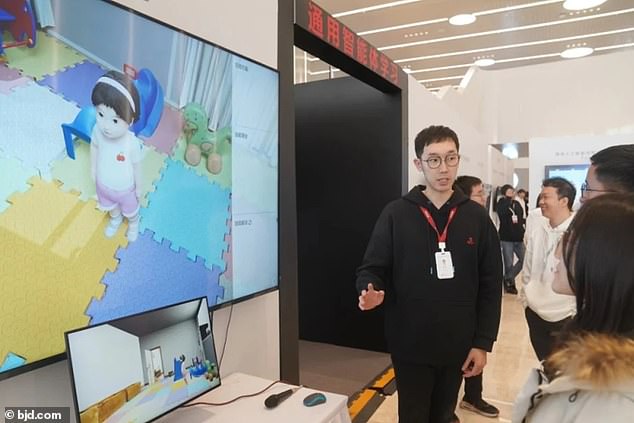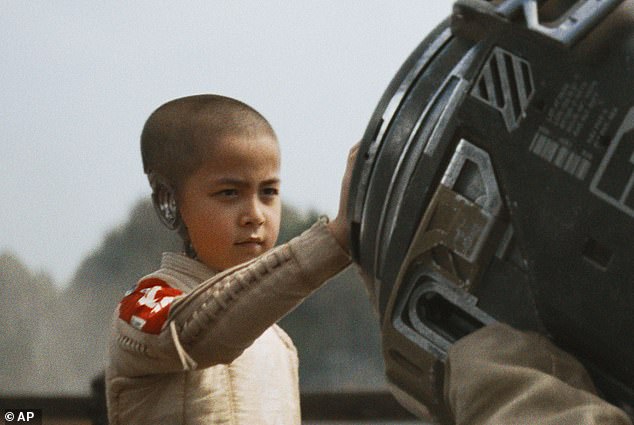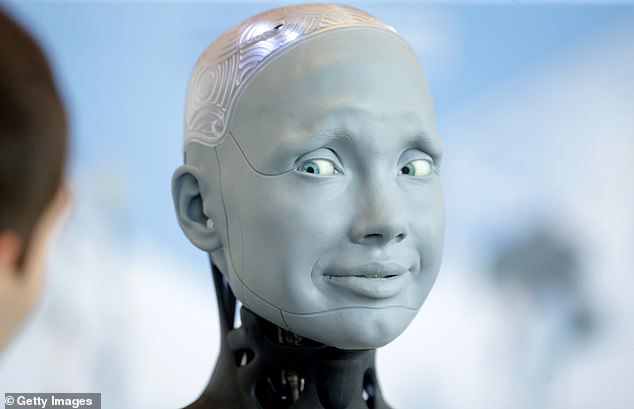Meet the world’s first AI child: Chinese scientists develop a creepy entity called Tong Tong that looks and acts like a three-year-old child
It may look and act like a little girl, but this creepy entity could be the next big breakthrough in artificial intelligence (AI).
Tong Tong, which means ‘little girl’, has been dubbed the world’s first AI child after it was unveiled by scientists at the Beijing Institute for General Artificial Intelligence (BIGAI).
According to the creators, the AI child can assign itself tasks, learn autonomously and explore its environment.
And while it sounds like the plot of the sci-fi movie The Creator, Tong Tong engineers say the AI can even experience emotions.
In a video, BIGAI says that Tong Tong “has her own joy, anger and sadness.”
Chinese scientists have unveiled the ‘first AI child’, an AI entity called Tong Tong, meaning ‘little girl’, which supposedly has its own emotions
Tong Tong was unveiled at the Frontiers of General Artificial Intelligence Technology Exhibition in Beijing in late January.
Unlike the AI-powered robots you might have seen in movies like Terminator, Tong Tong has no physical form.
Instead, the AI entity exists and operates within a virtual environment with which it can interact.
The creators say that Tong Tong exhibits the intelligence and abilities of a three- or four-year-old child.
According to a report from the South China morning mail, conference visitors could speak to Tong Tong and assign tasks.
For example, if you ask Tong Tong to tidy up, the AI would fix a crooked picture frame.
If the photo was too high, the AI would find a stool so it could reach it without outside help.

The Beijing Institute for General Artificial Intelligence (BIGAI) unveiled Tong Tong during an exhibition in late January. Visitors could interact with Tong Tong, who then responded to changes in the virtual environment

The science fiction film The Creator (pictured) focuses on the possibility of creating an advanced AI child. Tong Tong may not be as advanced as this movie portrays, but it could pave the way for the creation of artificial general intelligence
Meanwhile, if a human “spilled milk” in the virtual room, Tong Tong could conclude that it needed to be cleaned up and would find a towel to clean it up with.
However, Tong Tong’s most unique feature is its ability to self-assign tasks.
AI chatbots like ChatGPT or Google’s Bard only respond to tasks assigned to them by human agents and will not act unless explicitly requested.
This means that even the most advanced robots do not truly act autonomously.
Some AI-powered robots like Ameca, called “the world’s most advanced humanoid robot,” work with a “human in the loop” system that requires a person to provide instructions for the robot to carry out.
More autonomous systems such as loitering munitions and other robotic weapons use a ‘human on the loop’ system.

Even the most advanced robots such as Ameca (photo) do not act autonomously. However, BIGAI says they want to create intelligences that can act independently according to values and common sense
This means that the AI performs some tasks itself, but a human still gives the final authorization, sets the parameters or can cancel the action.
It’s not clear whether Tong Tong is a truly autonomous agent, but its creators seem to suggest it is much more independent than previous AI.
According to BIGAI, Tong Tong is able to define new tasks for itself based on values and common sense, similar to humans.
The video posted by BIGAI says, “Tong Tong possesses a mind and strives to understand the common sense learned by people.
‘She distinguishes right from wrong, expresses her attitude in different situations and has the power to shape the future.’
At the exhibition, BIGAI’s director Zhu Songchun also unveiled “the Tong Test,” which is intended to replace the Turing Test for artificial general intelligence.
While the Turing Test asks whether a human could tell if he was speaking to an AI or a robot, the Tong Test looks at a much broader set of parameters.
These are aimed at developing AI that can “learn and perform tasks in complex environments, driven by values and an understanding of causality.”
Zhu told the South China Morning Post: “To make progress toward general artificial intelligence, we need to create entities that can understand the real world and have a wide range of skills.”
